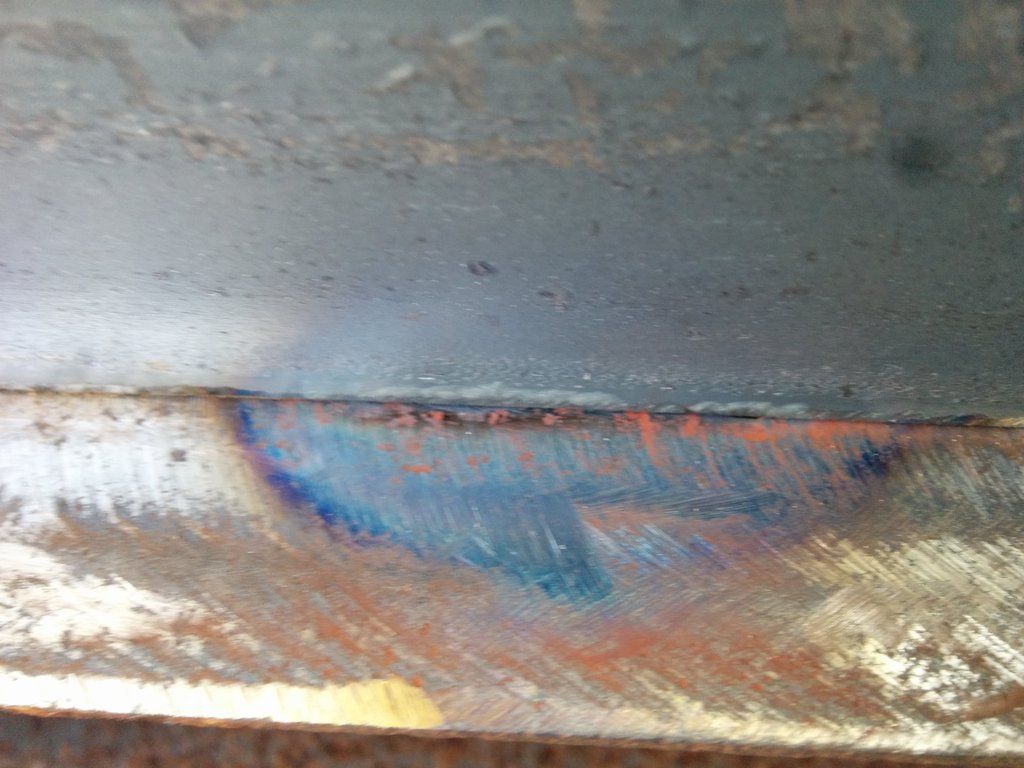codrus wrote:
Keep in mind that there's probably 500 pounds of wood going into that decking.
True, but RVs are typically pretty beefy. A 22' travel trailer might weigh 5000 empty with a GVW of 7000.
I'm saying, its likely that they removed 4000 lbs by taking the box off, so adding 500 for wood still leaves a lot of headroom.
Turning travel trailers into car trailers is usually a pretty straightforward thing since they often start pretty beefy.
Advice for a first-time welder.
1- spend many hours and a couple pounds of welding wire experimenting on the metal you'll be using. Flux core will not be as strong as MIG. The flux works by burning and making shield "smoke" instead of an inert gas. Often times if you cut a flux-core weld in half, it looks like pumice instead of solid steel since part of the flux gets trapped in the cooling weld.
2- inspect the other side of your welds. There should be a heat discoloration that is about twice the width of your bead. That means good heat penetration. Welds work by not only depositing molten metal to stitch the gap, but by melting the surrounding metal so it becomes one piece. If you aren't getting hot enough, it isn't tying into the surrounding metal well enough. Think of it like tree roots. A cold weld is like gluing a cut tree trunk to the ground. It only sticks in that one spot. A good hot weld is like the roots branching out and tying into surrounding metal. Find a heat that will blow through the steel, then find a heat that makes a heaped up bead (too cool). Go back 2/3rds of the way to the hotter heat and you should be good.
3- Keep a wire brush or wire wheel handy. The flux gets scaly and spits deposits on to the metal around. If you run a bead and then go back for a touch-up, make sure to clean it well first with the brush.
4- Don't make straight lines. That is to say, don't just strike an arc and draw a line in the seam. I like to hold the stinger up near the bend with my left hand and twist my right hand a little back and forth to make a wider bead and distribute the heat. Some guys go in little circles, some in figure-8s. Whatever works for you, do it.
5- Buy extra tips. Even with MIG, the tips get worn out. They're cheap. If you notice you're having trouble with a consistent bead, try changing the tip.
6- Keep a pair of side cutters handy. Sometimes if you get the stinger too close to the arc, it melts the wire onto the copper tip and won't advance more wire. Just clip the little ball of molten wire off the end.
7- Make sure the metals are super clean; no paint or rust. I lean towards using a wire wheel when I can. In some really rusty or painted situations I have to use a grinder. The theory is that using an abrasive disc embeds some of the abrasive material into the steel. Think of it like painting a dusty surface. The paint will dry, but it will only stick to the substrate in between the dust particles. Same for welding. I don't think its a big deal in your situation. I might worry about it on a rated-load beam, or a unibody repair, but heavy steel to heavy steel... fuhgettaboutit.
Fire extinguishers are nice. Have one.







































